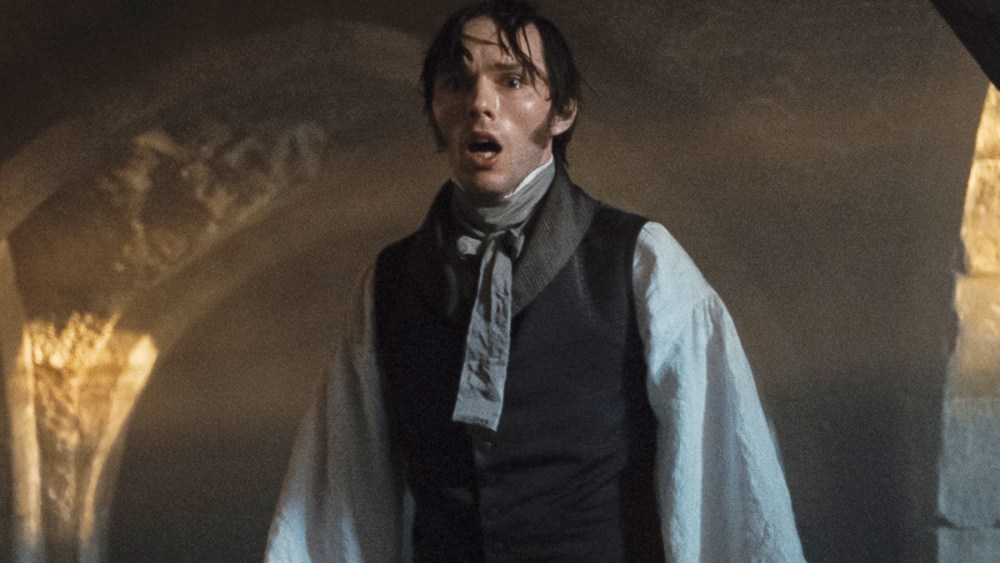When Robert Eggers decided to reimagine F. W. Murnau’s 1922 silent classic “Nosferatu” with his new remake, he wanted everything to be as practical and authentic as possible. That meant six hours of makeup for Bill Skarsgård to become the fearsome Count Orlok, a traditional orchestra of strings for composer Robin Carolan and more than 60 sets from production designer Craig Lathrop.
When it came to building Count Orlok’s castle, Lathrop traveled to the Czech Republic to look at castles. But each one he came across was “beautifully whitewashed, prim and ready for tourists.” They didn’t fit with the decayed aesthetic that both he and Eggers were seeking.
While Bran Castle, commonly known as Dracula’s Castle could have been used, Eggers and Lathrop settled on Corvin Castle in Hunedoara, Romania. Its crumbling exterior fit exactly what they were looking for. They ended up using the castle for an exterior shot – “Where they’re riding into the castle,” Lathrop reveals. Lathrop couldn’t use the interiors of Corvin Castle because, like every other one he had seen, it too had been refurbished. Instead, he had to build everything on a soundstage, including Orlok’s crypt.
One of Lathrop’s favorite sets was the monastery. He had seen photos of fresco-painted monasteries in Romania, but he wasn’t allowed to go. “They were all within 10 miles of the Ukrainian border, and we couldn’t go there because of the war.”
Lathrop ended up creating the interior, inspired by the images he had seen. But his challenge was time and money. He found a company in Italy that creates wall tattoos. Lathrop explains, “It’s very thin. But when you put it on the wall, all the texture comes through and goes over the imperfect surfaces, and it turned out really well.” The result was exactly what he was hoping to achieve, and as the frescoes left him in awe, the tattooed walls created that same vibe. He says, “I thought that’s the way the audience should feel when you see it, and feel awe.”
Eggers dedication to use practical means also meant Lathrop and his team had to work with 5,000 live rats. Following one of the first public screenings of the film, Eggers discussed the scene in a conversation with Guillermo del Toro, saying, “If there are rats in the foreground, they’re real, and then they thin out and become CG rats in the background. And they were well-trained.”
Lathrop explains, “The rats. None of them were lost. We found all of them. They were all there. We built these plexiglass barriers so that the live rats would be in a controlled area,” he said, adding that the production took care to ensure the rodents’ safety. “In the scene on the street, the horses are on one side of the plexiglass barrier, and the rats are on the other, so that the rats wouldn’t run underneath their feet and get squashed, so nobody would get hurt.”
Elsewhere, CG rats were used as the real rats moved and thinned out. “We built half-meter square mats where we had fake rats that we spread all over the ground. We had the live rats in the foreground, and behind them were the rat mats that effects came along later and animated.”


